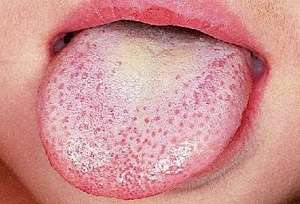WHAT IS SCARLET FEVER?
It is a bacterial infection – no matter whether you call it scarlet fever or scarlatina. Scarlet fever rash develops as part of the group A Streptococcus, often called ‘group A strep’.
It is not uncommon for people to get strep throat or skin infections resulting from group A strep. As a rule, mild cases of these illnesses clear up without too much concern.
But, if it develops further you will need a course of scarlet fever treatment (i.e. antibacterials).
This is to prevent other rare, but possible, serious public health issues.
In fact, anyone can get scarlet fever rash infection. But, in most cases it affects children between the ages of 5 and 15.
There is a classic symptom that sets it apart from other common diseases. As scarlet fever spreads you will see a red rash that feels coarse and scratchy to the touch – like rough sandpaper.
How Do You Get Scarlet Fever?
The nose and the throat is a suitable damp place for group A strep bacteria to live. The bacteria can spread with relative ease from person to person.
Contact takes place in moisture droplets when someone coughs or sneezes. You can become ill if you touch your own mouth, nose, or eyes after touching anything with these droplets on it.
There are several other ways you can catch scarlet fever. Drinking from the same glass as a sick person might be enough for you to get the illness too. You could also pick up the contagious disease if you eat from the same plate as a sufferer.
Fact: People can also get scarlet fever from contact with sores from group A strep skin infections.
Potential Long-term Health Issues from Scarlet Fever
Proper treatment with antibacterials should prevent further medical complications. But, early treatment of scarlet fever is vital to reduce any long-term health problems such as:
- Abscesses of the throat (pockets of pus)
- Arthritis (joint inflammation)
- Kidney disease (inflammation of the kidneys or ‘post-streptococcal glomerulonephritis’)
- Otitis media (a ear infection)
- Pneumonia (a lung infection)
- Rheumatic fever (an inflammatory disease affecting the heart, brain, skin, and joints)
- Skin infections
Scarlet Fever Signs and Symptoms
Early warning signs of scarlet fever are a sore throat, red tongue, and a high temperature. Body chills, nausea, vomiting, and abdominal pain often accompany other scarlet fever symptoms.
 The most common scarlet fever signs and symptoms in children include:
The most common scarlet fever signs and symptoms in children include:
- ‘Strawberry tongue’ with a whitish coating and swollen appearance.
- Very red, sore throat and tonsils with difficult, pained swallowing.
- A fever with a temperature of 38°C (or above).
- A red skin rash that feels rough (like sandpaper).
- Swollen glands and bright red skin in the underarm, elbow creases, and groin.
- Body aches, abdominal pain, and mild to severe headache.
- Nausea and sickness (actual vomiting).
As a rule, the distinctive red rash appears a few days after the onset of the illness. Some strains of strep bacteria produce a toxin (a poison). This causes some children to break out in the typical scarlet red rash infection.
The neck, the underarm, and the groin area tend to show the first signs of reddening. The rash starts off as small reddish blotches. It then begins to spread over the rest of the body and takes on a rough, bumpy feel (like grit).
It usually takes around 5 to 7 days for the scarlet fever rash to begin fading. Some skin might peel at the finger tips, toes, and the groin area as it fades. But, it can take several weeks for the skin peeling to finish its course.
Scarlet Fever Treatment
If a doctor diagnoses a child with scarlet fever they will treat it with a course of antibiotics. The tablets will clear up the symptoms faster and help to reduce the spread of the bacteria to others.
Lots of viruses and bacteria cause different types of sore throats. Your doctor may conduct a strep test (swab) on a child with a sore throat. A positive result to the swab test will mean a prescription for some antibiotics.
Note: Anyone with a sore throat should wash their hands often to reduce contagion of bacteria.
Scarlet Fever Precautions and Prevention
What is the best way to avoid getting infected? Make sure your children wash their hands often. Where possible, avoid sharing things like eating utensils, towels, and linens. Anyone with a sore throat must wash their hands often – with a good soapy scrub.
You cannot prevent scarlet fever using a vaccine – it does not exist. Thus, children suffering with scarlet fever should stay at home. Keep your kids away from school or daycare for a minimum of 24 hours after starting a course of antibiotics.

